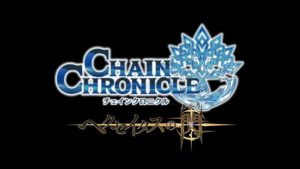In Act IV now, having returned to Loegres post-Temple.
The game does indeed open up a little once you get through the sea gate and unlock ship expeditions. This doesn’t really last though and the enemy-infested areas get ridiculously long at times: There’s that insanely oversized mass of tunnels after you first escape the Earth Pulse for instance, and the seemingly never-ending stretch of Reef before you reach Palamides Temples.
Making these areas worse is that they tend to be (over)populated by only 3-4 varieties of enemy groups. Presumably this is a result of the new equipment mastering system, to give players a decent chance of finding the unique equipment drops each enemy has. Which is dumb. They should have went with an increased drop chance and reduced the number of enemies and repetitious pseudo-corridors instead.
The railroading has also been pretty bad so far. Areas are often blocked off and returning to previous locations is heavily restricted, sort of forcing you to grind each area to get all the monster-drop equipment the very first opportunity you get… since there may not be a second chance anytime soon. The Katz chests can be skipped though since all they reward you with are either fashion items or an invitation to the Katz Corner location (which can only be visited just before the final dungeon).
Worst of all I think, is that at this point the storyline takes a dive and starts heavily mimicking Zestiria. Suddenly Malevolence is the focus and starts visibly showing up out of nowhere.
The actual combat is okay I suppose, though I’m not really feeling the Soul System. Against most random trash mobs it’s fine, but against bosses and boss-like enemies it’s pretty easy to get stuck with a low Soul count and be unable to combo or Soul Burst. I’ve been using Velvet exclusively, now with the following Arte setup:
Avalanche Fang -> Soaring Dragon -> Grounding Strike -> Scale Crusher
Mega Sonic Thrust -> Slag Assault -> Defiant Conviction -> Moonlight Cyclone
Cerberus Wave -> Binding Frost -> Heaven’s Wrath -> Infernal Torment
Swallow Dance -> Gouging Spin -> Searing Edge -> Shadow Form
With the 4 guard Artes being set to whatever weakness the current boss(like) enemy has. I’m not all that fond of Heaven’s Wrath though; while cool, it takes rather long to finish (which is an issue when Therionized). So I might try to switch it out eventually for something else. Maybe another Stunning attack.


